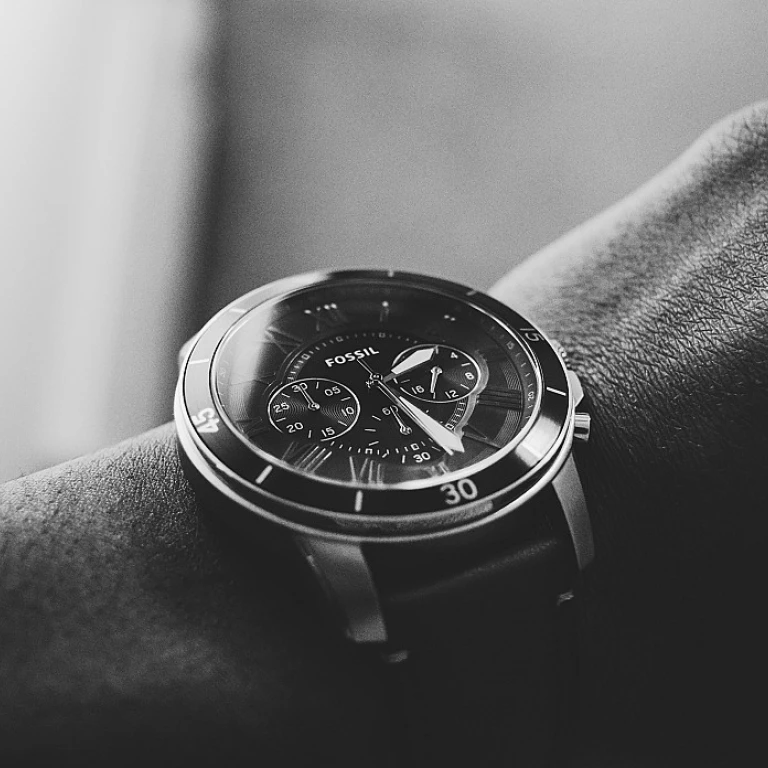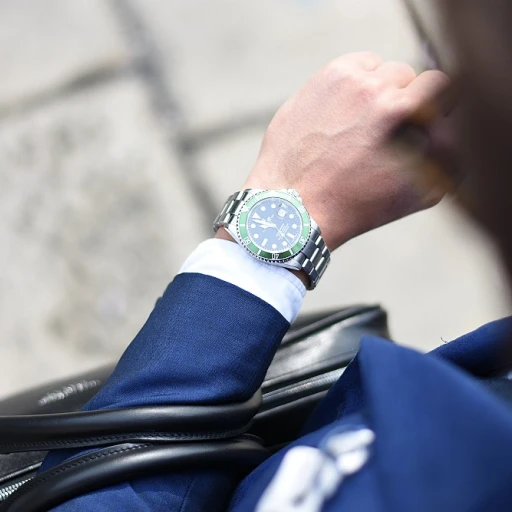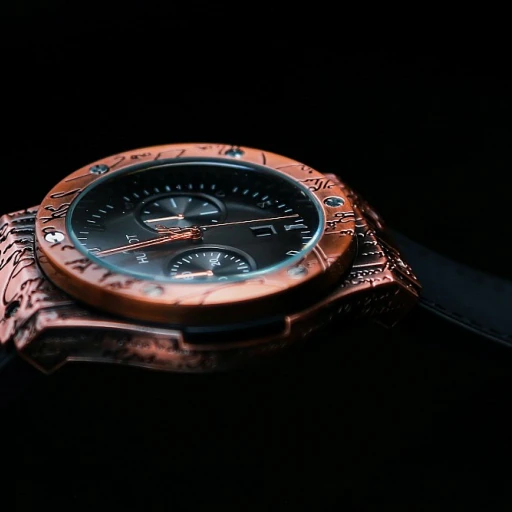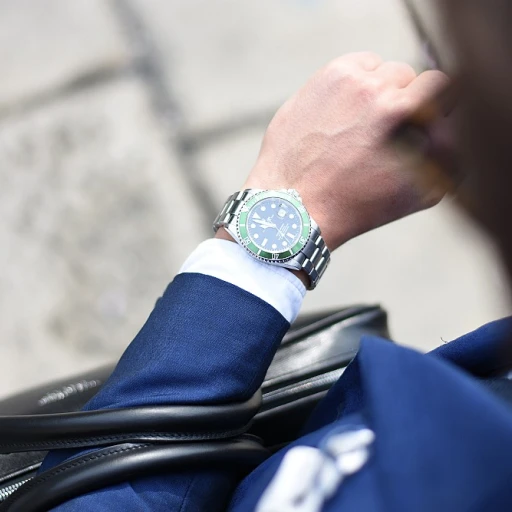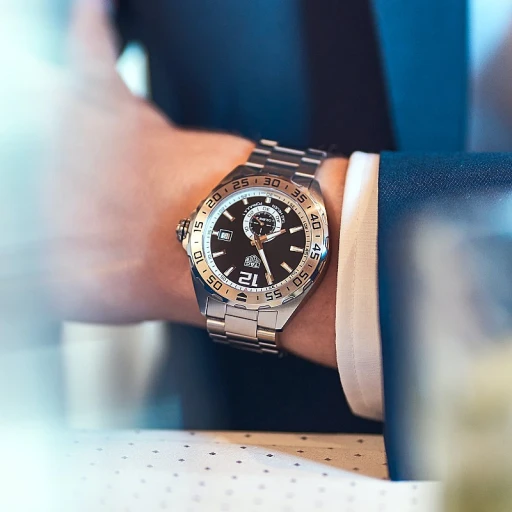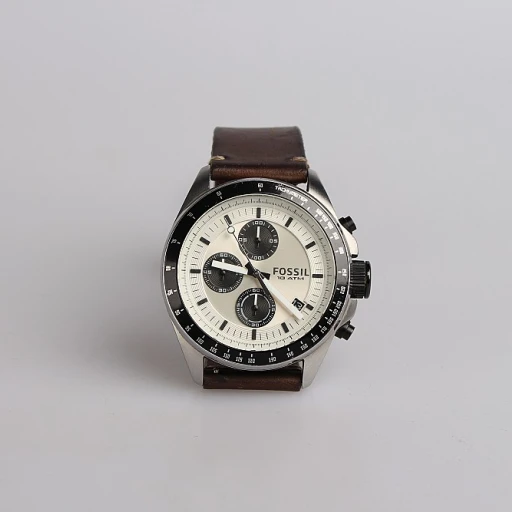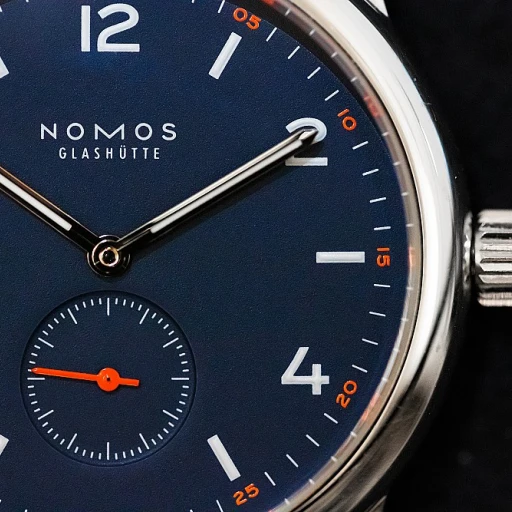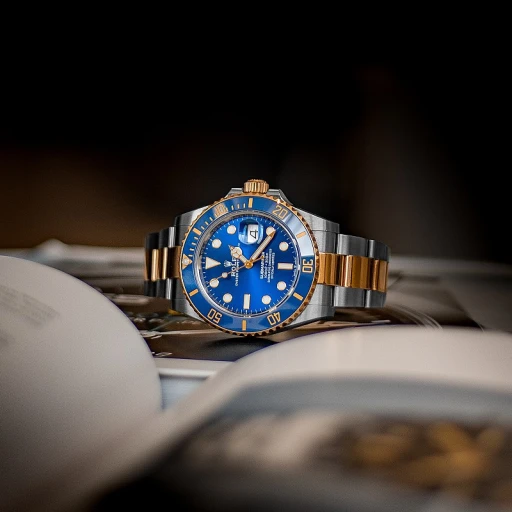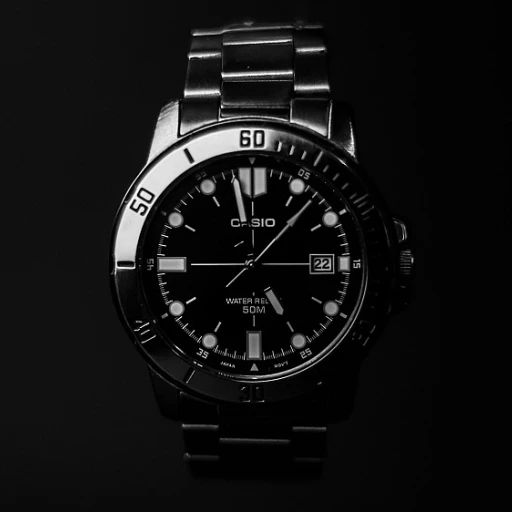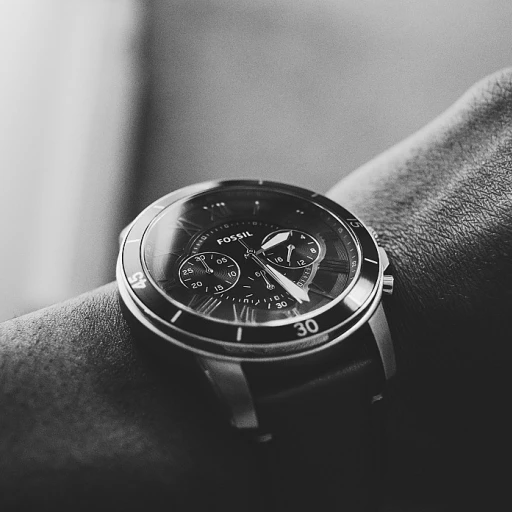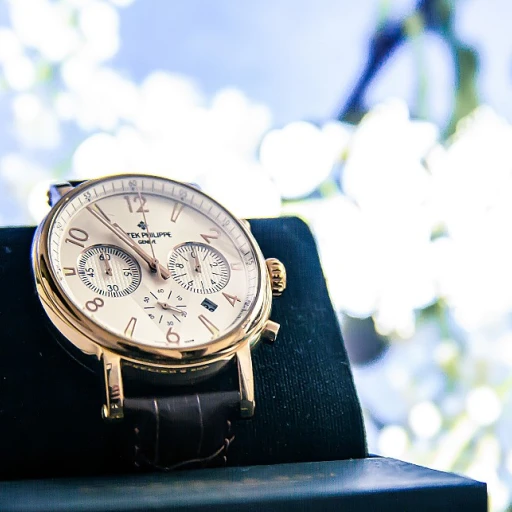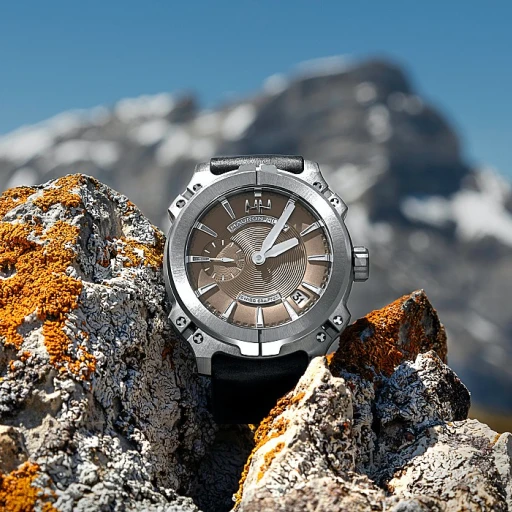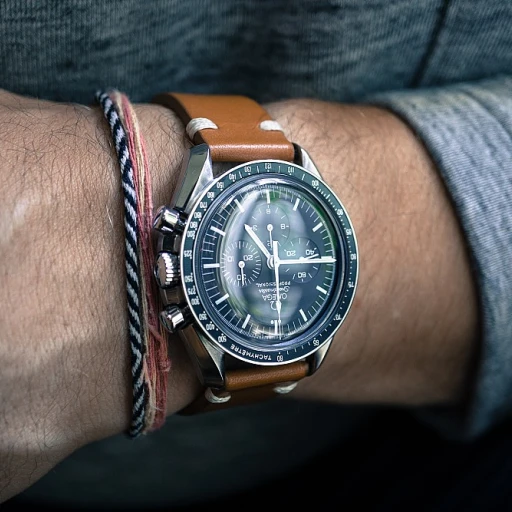
Swiss Precision in the Face of Adversity: Navigating Through World Wars
Navigating Historical Tumult
It's no secret that Swiss watchmaking has been the epitome of precision and durability, traits that shone brightly even as the world faced the harrowing challenges of global conflicts. The industry's resilience is not merely a triumph of craftsmanship but also a testimony to technological and strategic prowess. Indeed, statistics show that Swiss watch exports remained remarkably stable during tumultuous periods, with only a slight dip during the height of World War II.
Ultimate Craftsmanship During Global Conflict
Throughout World Wars I and II, Swiss watchmakers like A. Lange & Söhne persisted in perfecting timepieces that were highly sought after for their accuracy and reliability, essentials for military operations. Their creations during these times not only maintained but also reinforced the prestige of Swiss timekeeping. Collectors and historians alike often reference the era's watches as examples of unwavering dedication to horological excellence.
Strategic Positioning in Troubled Times
In the crucible of war, Swiss neutrality proved advantageous, allowing the industry to continue operations and even fill the void left by other nations' incapacitated production capacities. And while others struggled, Swiss watchmakers, according to historical analysis, were supplying both sides with precision instruments, demonstrating the universality and apolitical nature of the quest for timekeeping perfection. Enduring partnerships and a continuous focus on innovation became the Swiss strategy for outlasting the disarray of war.
Innovation Amidst Instability
Even in adversity, Swiss watchmakers introduced groundbreaking innovations. For instance, waterproof watches and anti-magnetic timepieces emerged as a direct response to the needs of the battlefield. Military demands drove the evolution of wristwatches, transitioning from pocket watches for convenience. According to industry statistics, wristwatch production saw a significant increase, accounting for a substantial proportion of watch sales by the end of World War II.
The precision and resilience of Swiss watchmaking, in the face of adversity, are what has allowed it to remain a steadfast symbol of luxury and reliability through the ages. Such historical integrity is a cornerstone upon which modern luxury watch enthusiasts base their admiration and respect for these artisanal timepieces.
The Quartz Crisis: Swiss Watchmaking's Ultimate Test
The Quartz Crisis: A Turning Point for Swiss Craftsmanship
In the 1970s and 1980s, the luxury watch industry faced an unprecedented challenge: the advent of quartz technology. This was a period now referred to as the Quartz Crisis, a time when the arrival of highly accurate and mass-produced quartz watches from Asia precipitated a seismic shift in the world of traditional Swiss watchmaking. A closer examination of the innovative spirit during that era reveals how Swiss brands, renowned for their expertise in mechanical watchmaking, were forced to rethink their strategies to survive.
Adapting to Change: The Swiss Response to Quartz Watches
- Innovation in Mechanical Movement
- Shift to Luxury Market Niche
- Enhancing Brand Prestige and Heritage
The Swiss watch industry's reaction to the Quartz Crisis is a telling tale about adaptability and survival. Statistics showed a dramatic decline in Swiss watch exports during the crisis; however, it was also a period of introspection and reinvention. Brands such as Patek Philippe, Audemars Piguet, and Vacheron Constantin began to focus more acutely on the luxurious aspect of their mechanical timepieces, leveraging their heritage to carve out a distinct market niche. This strategic pivot not only helped them to survive but also to thrive in a market dominated by quartz technology.
Legacy of the Quartz Crisis: Learning from History
The Quartz Crisis is more than a chapter in the history books; it stands as a poignant lesson on the resilience of the Swiss watch industry. By examining the strategies employed by leading Swiss brands during this challenging time, today's luxury watch enthusiasts gain valuable insights into the importance of innovation and the enduring appeal of Swiss craftsmanship in an ever-evolving market. The crisis underscored the importance of embracing new technologies while maintaining a strong connection to traditional horological values, a balance crucial for enduring success in luxury watchmaking.
Renaissance Through Revolution: The Digital Age's Effect on Swiss Horology
Digital Innovations Reshaping Swiss Watches
The ascension of digital technology presented a double-edged sword for luxury Swiss watchmaking, blending challenges with opportunities. A sharp pivot towards innovation became essential as tech-savvy consumers started having different expectations from their timepieces. According to a Deloitte study on the Swiss watch industry, the integration of smart features in luxury watches is becoming increasingly popular, with connectivity and health monitoring leading consumer preferences. Swiss brands started infusing their classical mechanical wonders with smart functionalities, creating a unique segment in the luxury watch market that combines traditional craftsmanship with contemporary technological feats.
Resurgence of Mechanical Marvels
In response to the digital deluge, Swiss watchmakers rekindled the love for mechanical timepieces. They accentuated the allure of complex movements and the artistry behind watchmaking to distinguish themselves from the digital offerings. Collectors and connoisseurs continued to valorize manual and automatic watches for their intricate engineering and emotive value. As a testament to this resurgence, the Federation of the Swiss Watch Industry reported that mechanical watch exports saw an uptick even amidst the digital revolution, underscoring the enduring appeal of artisanal watchmaking.
To delve deeper into the intersection of classic engineering and modern functionality, explore the curious case of the Universal Geneve Polerouter.
Harmonizing Innovation with Tradition
Navigating the tide of digital transformation, luxury Swiss watchmakers are innovating while maintaining their heritage. Brands are adopting novel materials and designs, resulting in lighter, more durable watches that stay true to the ethos of luxury timekeeping. High-profile collaborations between Swiss watchmakers and tech companies have given rise to new product categories, strategically blending the best of both worlds. For example, TAG Heuer's Connected watches have set benchmarks for performance, elegance, and technological integration, illustrating an effective synthesis of Swiss precision with digital innovation.
Preserving Heritage Amid Progress: The Future of Swiss Watchmaking
Embracing Technological Synergy While Honoring Tradition
As the luxury watch industry projects its gaze into the future, Swiss watchmaking stands at the confluence of preservation and innovation. Modern demands call for advanced functionality and connectivity, leading to the rise of smartwatches and other wearable technology. Despite the surge of these technically-equipped timepieces, high-end luxury watches have experienced a paradoxical increase in desirability, with collectors and aficionados craving the tangible heritage they embody. This trend demonstrates that while consumers are embracing the features of the digital age, there is a profound respect for the craftsmanship and storied history inherent in traditional Swiss watches. According to the Federation of the Swiss Watch Industry, exports of Swiss watches have seen an annual increase, signaling robust health within the sector.
Strategies for Integrating Modernity With Legacy
- Curating Limited Edition Models: Limiting production runs creates exclusivity and drives demand, reinforcing the brand's prestige.
- Adopting Sustainable Practices: Transparency in sourcing and production appeals to environmentally conscious consumers.
- Leveraging Social Media: High-end brands that effectively use platforms like Instagram can connect with younger demographics.
These approaches ensure that renowned luxury watch brands remain pertinent. For instance, Rolex continues to maintain an air of timelessness while subtly incorporating contemporary advances to enhance performance without compromising their design ethos. This balance is essential for continued relevance in the luxury watch market.
The Forecast for Swiss Horology
Statistical forecasts suggest a bright horizon for Swiss watchmakers. Consumer appetite for luxury goods is touted to climb, with Bain & Company reporting anticipated growth in the luxury market despite economic uncertainties. The resilience of high-value Swiss watches lies in their emotional and financial investment appeal. True connoisseurs recognize that beyond mere time-telling, a Swiss-made watch represents a legacy—the meticulous hand of the watchmaker, the symphony of precision mechanics, and the embodiment of generations of skill. The key for industry players is to forge ahead with technological advancements while anchoring themselves to the rich history that only a finely crafted Swiss timepiece can tell—a combination of attributes that is, undoubtedly, timeless.
